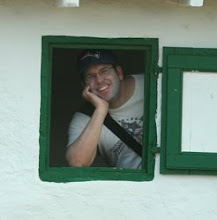Our Vegas trip was very nice. We saw a lot of interesting things and our bird list almost made it to 100. The best thing was that 18 were life birds for me (highlighted in bold font). Here's the complete list:
Birds: Snow Goose,
Ross's Goose, Canada Goose, Wood Duck, Gadwall, American Wigeon, Mallard, Blue-winged Teal, Cinnamon Teal, Northern Shoveler, Northern Pintail, Green-winged Teal,
Canvasback, Redhead, Ring-neck Duck, Lesser Scaup, Bufflehead, Hooded Merganser, Common Merganser, Ruddy Duck, Gambel's Quail, Pie-billed Grebe, Eared Grebe, Double-crested Cormorant, Great Blue Heron, Great Egret, Snowy Egret, Green Heron, Black-crowned Night Heron, Northern Harrier, Sharp-shinned Hawk, Cooper's Hawk, Red-tailed Hawk,
Golden Eagle,
Ferruginous Hawk, American Kestrel, Merlin,
Prairie Falcon, Sora, Common Moorhen, American Coot, Semipalmated Plover, Killdeer, Least Sandpiper, Wilson's Snipe, Ring-neck Gull, California Gull, Rock Pigeon, Mourning Dove, Greater Roadrunner, Burrowing Owl, Long-eared Owl, Anna's Hummingbird, Northern Flicker,
Red-breasted Sapsucker,
Black Phoebe,
Say's Phoebe,
Vermillion Flycatcher, Loggerhead Shrike, Western Scrub-Jay, Common Raven, Horned Lark, Verdin, Bushtit, Rock Wren,
Bewick's Wren, Ruby-crowned Kinglet, Blue-gray Gnatcatcher,
Black-tailed Gnatcatcher, American Robin, Northern Mockingbird,
Crissal Thrasher, European Starling, American Pipit, Phainopepla,
Orange-crowned Warbler, Yellow-rumped Warbler,
Abert's Towhee, Black-throated Sparrow, Song Sparrow,
White-crowned Sparrow, Red-winged Blackbird, Western Meadowlark, Brewer's Blackbird, Great-tailed Grackle,
Cassin's Finch, House Finch, House Sparrow,
Dark-eyed "Oregon" Junco, Western Bluebird, Mountain Bluebird,
Clark's NutcrackerMammals: Desert Cottontail, Jackrabbit, Wild Burro













